A simple water cycle in a bottle activity to explore weather science! It’s definitely fun to make fizzy eruptions and explosions, but it is also important to learn about the world around us. This simple science discovery bottle is a quick and easy way to learn about the water cycle and dive into earth science with kids!
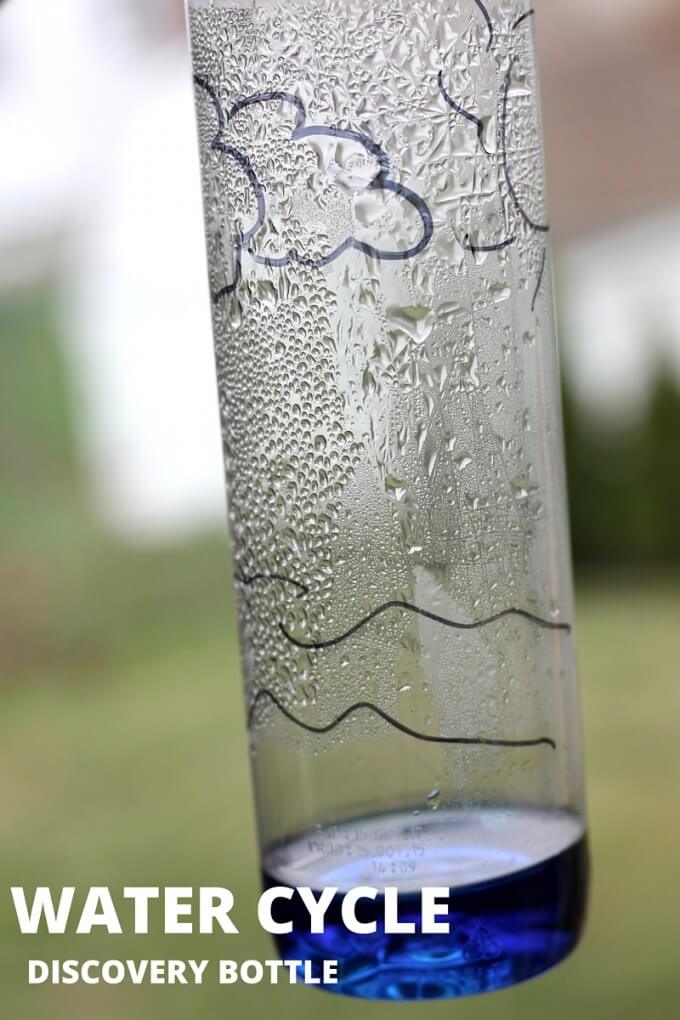
Cycle of Water Project
Investigating the cycle of water and how it plays a part in our environment is fantastic for kids’ earth science! Teaching kids about the water cycle is essential because it helps them understand how water continuously moves and cycles through the environment.
By learning about processes like evaporation, condensation, and precipitation, children gain a deeper appreciation for the interconnectedness of Earth’s systems and the importance of conserving water resources. This knowledge also empowers them to make informed decisions about environmental stewardship and sustainability daily.
Water Cycle In A Bottle
Also, check out how to make a Water Cycle In A Bag as a fun alternative!
Supplies:
- VOSS Plastic Water Bottle {or similar}
- Water
- Blue food Coloring {optional but helpful}
- Sharpie
Instructions:
STEP 1: Go ahead and draw clouds, a sun, water and land on the sides of the bottle. We each made a bottle.

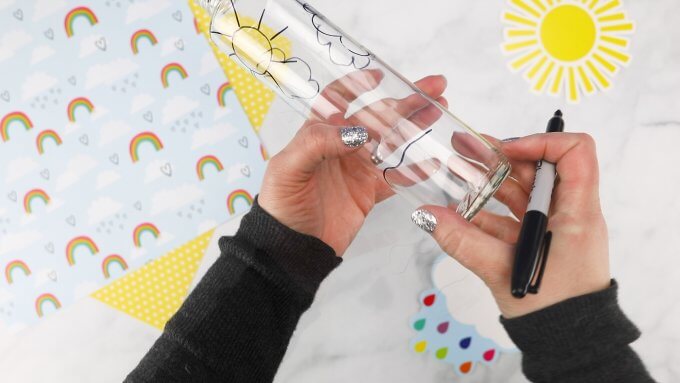
STEP 2: Mix up about a 1/4 cup of water and blue food coloring for each bottle and pour the water into the bottle.

STEP 3: Place by the window!
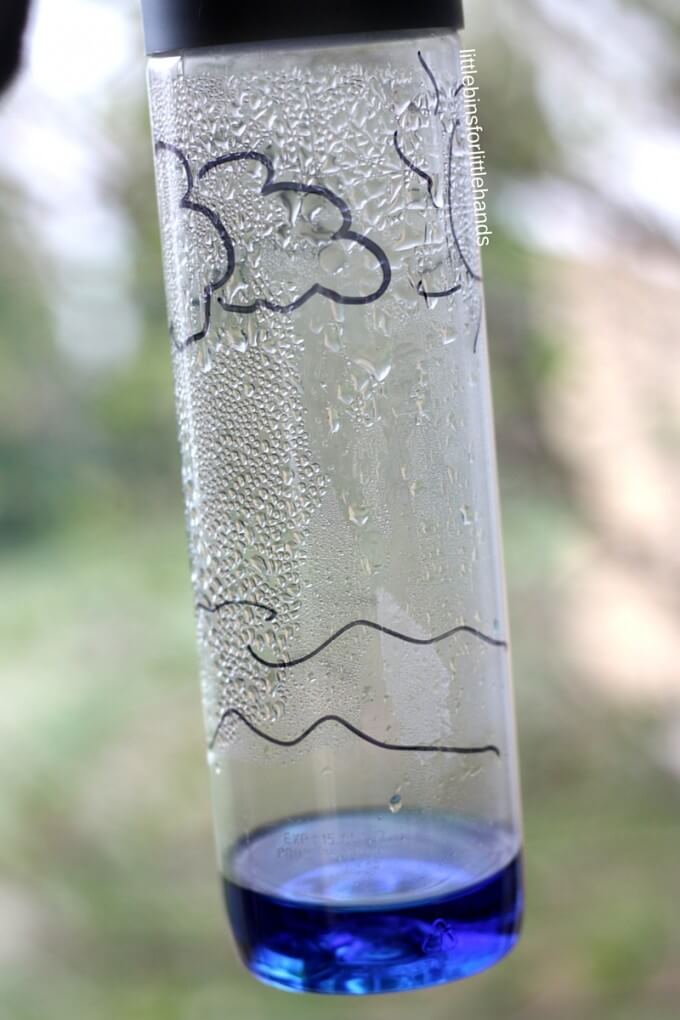
How Does The Water Cycle Work?
The water cycle is a natural process that describes how water moves and changes states of matter between liquid, vapor (gas), and solid (ice) on Earth. The water cycle is important because it is how water gets to all the plants, animals and even us!! The steps of the water cycle are:
Evaporation
The water cycle works when the sun heats up a body of water and some of the water evaporates into the air. This might be water from lakes, streams, oceans, rivers, run off etc. The liquid water goes up into the air in the form of steam or vapor (water vapor).
Condensation
When this vapor hits cooler air it changes back to its liquid form and creates clouds. This part of the water cycle is called condensation.
Related Activity: Rain Cloud In A Jar
Precipitation
When so much of the water vapor has condensed, and the clouds are heavy, the liquid falls back down to the earth as precipitation. Precipitation can be in the form of rain, hail, sleet, or snow.
Runoff
After precipitation, water can flow over the land, forming streams and rivers. This is called runoff. Picture raindrops flowing down the street or through a garden into a stream.
Related Activity: Stormwater Runoff Demonstration
Collection
The water from runoff collects in oceans, lakes, and rivers, starting the cycle again. It’s like a giant water reservoir that holds all the water until the sun warms it up and turns it into vapor, starting the process over.
Transpiration
Another way water returns to the atmosphere is through transpiration. Plants absorb water from the soil through their roots and release it into the air as water vapor through tiny openings in their leaves.
Related Activity: How Plants Breathe
Repeat
The water cycle is a continuous process. Water from the Earth’s surface evaporates, forms clouds, falls back as precipitation, and repeats the cycle repeatedly.
Of course, with this water cycle bottle, you can not see each stage completely, but it is a great hands-on project to go along with talking about the water cycle with your kids. It provides a simple visual for kids to see the changes!
How Does The Water Cycle In A Bottle Work?
The water cycle in a bottle experiment is a simple but effective way to demonstrate the steps of the water cycle in a closed system. Here’s how it works and how it relates to the steps of the water cycle.
Evaporation: As the water in the bottom of the bottle absorbs heat energy from the light source (the sun or a lamp), it evaporates, turning into water vapor.
Condensation: After some time, you’ll notice water droplets forming on the inside surface of the bottle. This condensation occurs when the warm water vapor comes into contact with the cooler surface of the bottle. The water vapor changes back into liquid water.
Precipitation: As more water vapor condenses on the bottle’s surface, the droplets may grow larger and eventually fall back into the water at the bottom of the bottle. This process demonstrates precipitation like rain.
Collection: The water that collects at the bottom of the bottle represents the water that has fallen back to the Earth’s surface as precipitation. This collected water can then evaporate again when exposed to heat, completing the cycle.
By observing the water cycle in a closed bottle, kids can see firsthand how water transitions between its three main states (liquid, gas, and solid) and moves through the various stages of the cycle.
More Fun Weather Science Activities To Try
Check out our list of weather activities for preschoolers, elementary and older. Including…
- Tornado in a Bottle
- Shaving Foam Rain Cloud
- Making Rainbows
- Rain Cloud In A Jar
- Water Cycle In A Bag
- Cloud In A Jar
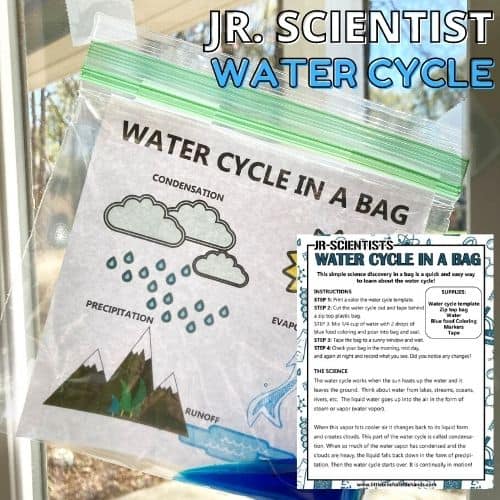

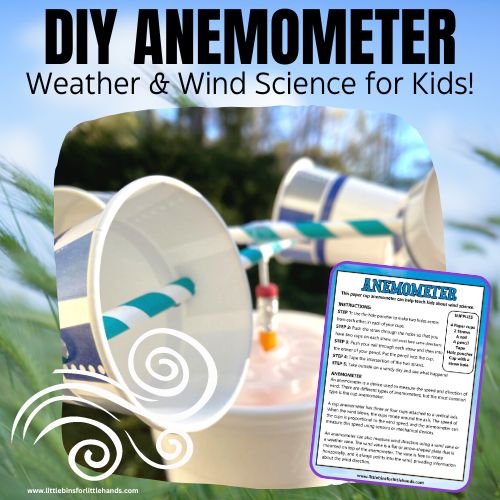
Bonus Printable Spring Activities Pack
If you’re looking to grab all of the worksheets and printables in one convenient place plus exclusives with a spring theme, our 300+ page Spring STEM Project Pack is what you need! Weather, geology, plants, life cycles, and more!
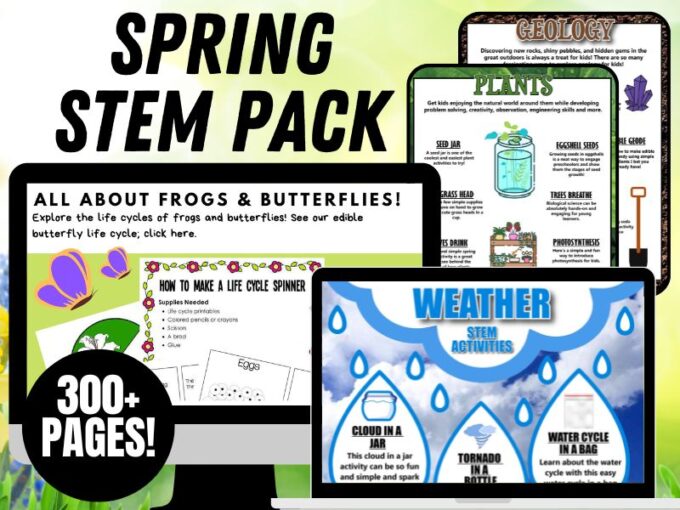


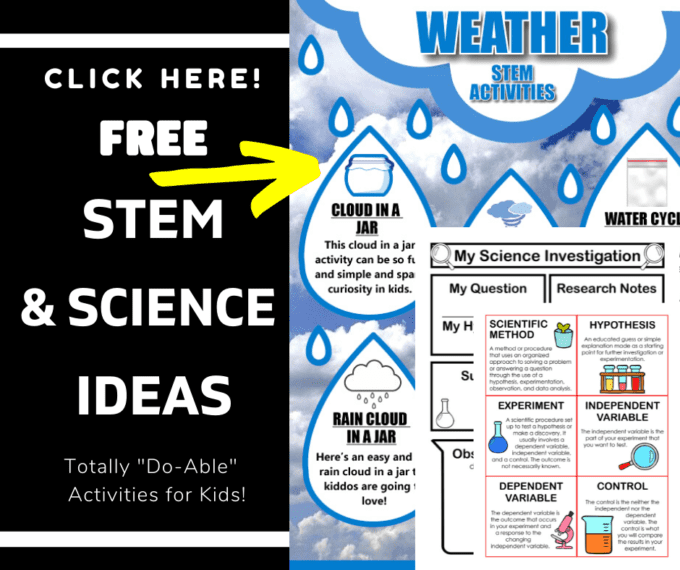






Hmm, Learnt a new aspect of science. Thanks. I will share with my children.
Would this work with a 2-Liter bottle